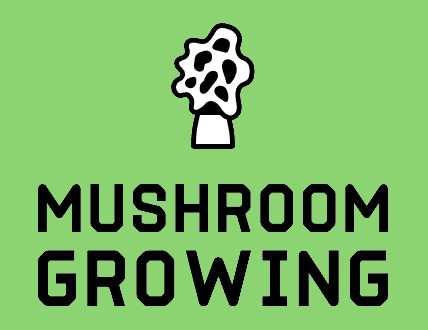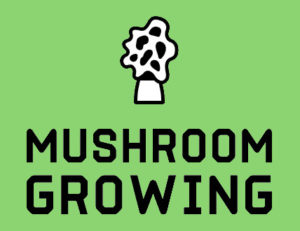Straw is an agricultural waste product from grain crops. During the growing process, straw has little use and it becomes a waste product once the grains have been harvested. Sawdust on the other hand is another waste product from woodworking and lumber.
Sawdust is the byproduct of sawing logs into boards, which can be used as a substrate for growing mushrooms.
When picking an edible mushroom to cultivate, it's important to choose one that will grow well on your chosen substrate.
If it is an edible mushroom that likes humidity then straw would be better because it holds more moisture inside its plant cells than does sawdust.
On the other hand, some mushroom species lay their mycelium in sawdust because it is less likely to clump.
Although it might seem that these two substrates are very similar, they have different characteristics regarding humidity, nutrients, and/or water retention.
In this article, we will discuss the differences between straw and sawdust substrates for edible mushroom cultivation.
At a top-level summary it's worth noting that it's usually faster to grow edible mushroom on straw, and you might encounter fewer issues; but let's dive into this topic a bit deeper.
Nutrients in straw and sawdust
Both straw and sawdust are used as substrates because they contain few nutrients. Nutrients are the food source of the mushroom mycelium, if there are too many nutrients in the substrate then it can prevent fruiting.
Straw has higher levels of potassium than sawdust; however, straw is slightly acidic while sawdust is slightly alkaline. Both substances are also deficient in nitrogen, phosphorous, and magnesium.
These two substrates can also be used in addition to other ones (brown rice flour, rye, wheat, etc.) in order to provide a more complex nutrient profile for the fungi.
Availability of straw and sawdust
Both straw and sawdust are readily available. Straw can be sourced from organic farms, while sawdust is bought in bags at a garden store or hardware store.
But if you have access to both straw and sawdust then you should know that straw can contain more organisms than sawdust so it's necessary to sterilise straw - and most times you should also do the same with sawdust, just to be safe.
Moisture Retention - straw vs sawdust
There are significant differences in water retention between these two substrates. Straw has similar moisture levels to paper, while sawdust is more absorbent.
Straw has a better-suited humidity level for most edible mushrooms, especially if the mushroom is going to fruit in a tropical temperature since straw has a higher water retention capacity.
However, sawdust can sometimes be used with certain edible mushrooms that require drier conditions such as the shiitake mushroom (Lentinula edodes).
How they are stored
Straw is most often used fresh, while sawdust can be stored in bags or storage bins for future use. Straw has similar characteristics to paper, it should be noted that molds and bacteria love growing on paper.
If the straw is stored before cultivation then it should be pasteurized to kill off any fungi and bacteria that might try to grow on the substrate.
Fruiting Temperatures
There is a difference regarding fruiting temperature between these two substrates; This is important because some subspecies of edible mushrooms can only grow within a certain temperature range.
The fruiting temperature for straw ranges between 18°C to 25°C or 65°F - 77°F, which is ideal for certain mushrooms. Sawdust has a considerably lower range of fruiting at 11°C -22°C or 52°F -72°F.
Growth Speed
The fruiting time is dependent on the temperature and humidity of the substrate, but it can also be affected by another factor; straw has a higher rate of mycelial growth than does sawdust.
This means that when incubating the spores in either substrate, you will see faster progress with straw than sawdust because there are more nutrients for the mycelium to feed on and grow faster.
Texture and Clumping
Straw has a much rougher texture because it is made from plant material and clumps together more than does sawdust and is suitable for mushroom types that typically grow on plant material.
Sawdust has a finer texture and it does not form clumps as easily as straw, which can make it more suitable for types that would normally grow on wood like oyster mushrooms and pink oysters and other mushrooms species that spread out over a large area during fruiting.
Odour of sawdust and straw
Straw has a very distinctive smell because it is dried plant material, while sawdust is not noticeable. This characteristic can be both beneficial and harmful, depending on the situation you are trying to overcome.
If the smell of straw bothers you then sawdust can be used as an alternative since it does not have that distinct scent.
On the other hand, straw is often preferred because its smell helps repel certain pests such as rodents or insects that could invade a cultivation area.
The final product
Both straw and sawdust are used to grow edible mushrooms, but each substrate affects the quality of the final product differently.
Edible mushrooms grown on straw have a better taste, texture, smell, and appearance than those grown on sawdust.
But certain types of edible mushrooms grow well on straw (oyster mushroom) or sawdust (shiitake).
Edible mushrooms can be grown using both straw and sawdust substrates. Straw is the better substrate if the edible mushroom prefers humid conditions because it has a high water retention capacity.
Other edible mushrooms fruit best in drier conditions so they are cultivated on sawdust because it is less likely to clump and has a lower water retention capacity.
Although the substrate might seem inconsequential in terms of the final product, it actually can affect the quality of the mushrooms.
Straw may be a better substrate for taste, texture, smell, and appearance due to its higher water retention level which means more water available for the mycelium to use.
Sawdust is better suited for growing mushrooms that require dryer conditions such as shiitake mushroom (Lentinula edodes).
So what's better - straw or sawdust?
Both substrates are suitable for growing many types of mushrooms and which one is chosen usually depends on the cultivator's preference or experience with using a specific substrate.
Straw and sawdust substrates differ in their nutritional content, but both are great for growing mushrooms.
If you're looking to grow your own mushroom spawn or cultivate edible fungi, it's also worth considering the difference between straw and wood chips as a growth medium.
While there isn't necessarily an "ideal" choice of the substrate (i.e., one that is better than the other), understanding what each has to offer might give you some insight into which would be best suited for your needs.
If I had to pick one for a beginner mushroom grower, I'd go for straw as it's usually easier to get hold of and can be less problematic - you can pasteurize straw, whereas sawdust will likely require the use of a pressure cooker.

